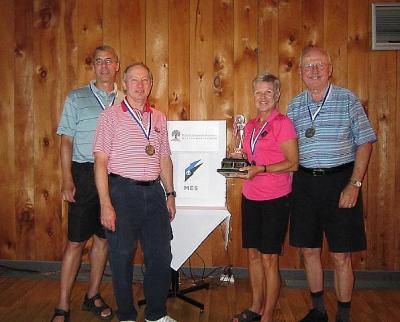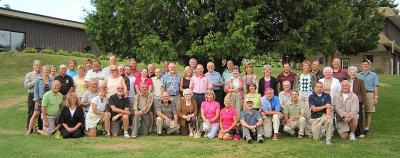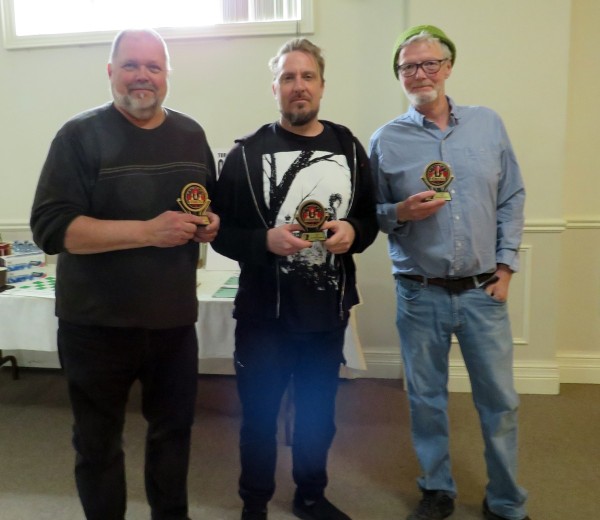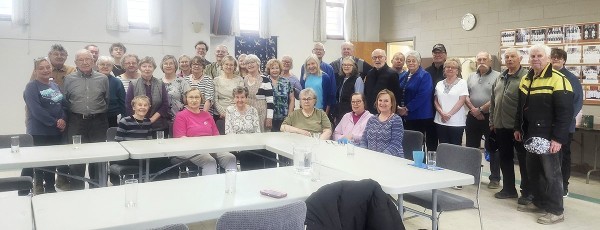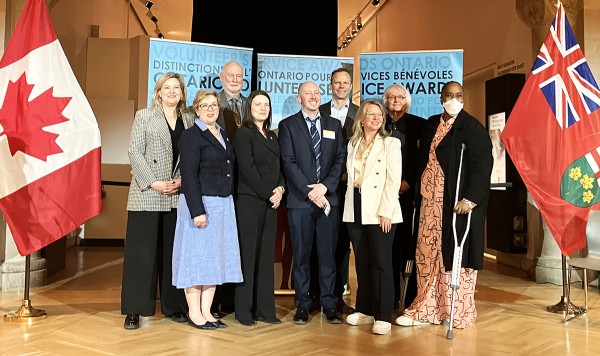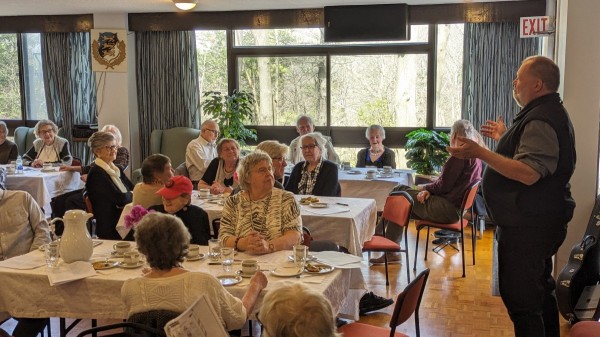Tõnu Onu
The Montreal Estonian Society (MES), with its objective of organizing social and cultural activities for the enjoyment of its members, once again organized its very popular golf tournament on July 30th at the Oasis Golf Club in Lachute, Quebec. This was the fifth annual tournament and, as usual, attracted golf enthusiasts of Estonian origin and their friends from Montreal and distant outposts, attracted to the excitement of this prestigious social and sporting event. (Photos: www.mtlmes.ca)
In all of its endeavours, which so often appear to be light-hearted social activities, the MES is always mindful of contributing to the intellectual advancement of its members. The MES is not easily distracted from this noble goal and so, in the best Canadian tradition, decided to combine business and pleasure in this year’s golf tournament.
As in previous years, the golf tournament was advertised as a pleasant social outing for MES members and friends. It can now be revealed that this year’s golf tournament, in fact, had a higher purpose than a merely frivolous golf outing. In typical Estonian modesty, organizers earlier did not wish to reveal this serious side of the tournament. They are willing to do so now after having completed a very successful tournament both on a social and, more importantly, on a scientific level.
In its endeavours to further Estonian scientific knowledge, the golf tournament provided a perfectly innocent façade for the lofty intellectual purposes the MES has set for itself. In the case of the golf tournament this was made clear by the fact that all participants were required to look smart, at least near the club house where appearances are always important, if not deceiving. At the same time organizers made it clear that looking smart did not mean spending the whole day at the bar in the clubhouse rather than on the golf course.
After teeing off on the first hole, each team was required to undertake serious scientific observation and study in the name of advancing knowledge in fields where empirical evidence was still very limited.
The first area of research was carried out at the request of Professor Karl Raudsepp, chief scientist at MES specializing in music. Although the research was more musical than scientific, it still was not without scientific significance. Namely, golfers were asked to make note of the different sounds that a golf ball makes as it hits different species of trees and rocks in the woods surrounding the fairways. This was a particularly successful piece of research since participants displayed great talent at hitting the various trees and rocks along the golf course. A fascinating secondary scientific discovery in this area of research was that a golf ball hitting a fellow golfer’s head made a sound very similar to a golf ball hitting a tree. It was noted, however, that the golf ball hitting another golfer’s head seemed to make a distinctly more hollow sound.
There was also a proposal to record the sounds golfers themselves made as their golf balls hit trees and rocks but this research, unfortunately, had to be discontinued rather quickly. Since the MES organizes and sponsors only family oriented activities with an Estonian content, it soon became apparent that the sounds made by golfers in this context were neither very Estonian nor very musical and not suitable in a public place. The MES is pursuing discussions with certain downtown establishments in Montreal to see if there is a market for these sounds in the adult entertainment business. Some local fruit farmers also expressed interest in using the sounds to scare away birds from their fields.
Another fascinating area of research, more scientific than the first, also examined the relationship between nature and golf. Namely, the purpose was to discover how many golf balls it takes to fill up a pond. This experiment was taken up with great enthusiasm by all golfers as they did their best to participate as soon as a pond was sighted on the golf course. However, this experiment remained incomplete since, despite their enthusiasm, there was a lack of discipline on the part of the golfers. Rather than concentrating on filling only one pond with golf balls, they had a tendency to attempt to fill every pond with golf balls. Next year, golfers will be asked to make a more concentrated and disciplined effort to fill one pond only.
The next area of research which was particularly relevant to members using Montreal roads, involved the golf carts. It was decided to see how many bumps a golf cart had to hit before the passenger fell out. The secondary aspect of this research was to see how many bumps a golf cart had to hit before the passenger hit the driver of the cart. This experiment unfortunately produced a few scenes of unestonian behaviour when some of the passengers attempted to hit the driver of the cart after the cart hit one too many bumps. Fortunately there were no serious casualties in this activity since most of the golfers displayed the same skill level at hitting their golfing partner as they did at hitting the golf ball.
Another area of research with cultural implications and which demonstrated Estonian golfers’ knowledge and interest in Greek mythology was the Sisyphus experiment. In this Estonian variation of Greek mythology, the objective here was to determine how many times a golf ball will roll back downhill after the golfer has hit it uphill towards the hole. It was discovered that a golf ball can roll in an infinite number of directions away from the hole despite the repeated best efforts of the golfer. This experiment did provide conclusive proof that Estonian golfers had a much greater liking for rolling Estonians than for rolling golf balls.
Once the day’s scientific experiments were completed, golfers moved on to the traditional excellent feast and distribution of prizes for scientific as well as less scientific accomplishments. The winners were:
1. Lowest Team Score: Henno Lattik, Anu Nerska, David Sheridan & Vello Taal
2. ESK/NEFC Scholarship Winner: Stephanie Raudsepp
3. Andres Pedriks Trophy (Closest-to-the Hole): Vello Taal
4. Most Accurate Drive - Female: Tiiu Kaljurand
5. Most Accurate Drive - Male: Tõnu Onu
As in previous years, the chief scientist and organizer was Karl .Raudsepp, assisted in gathering empirical evidence on the golf course by Anne and Peeter Altosaar, Ene Tikovt and Elvi Edwards.
All looked forward to pursuing their intellectual and scientific efforts at next year’s golf tournament.

Montreal Estonian Society Golf Tournament 2010
Eestlased Kanadas | 03 Sep 2010 | EL (Estonian Life)Eesti Elu
Eestlased Kanadas
TRENDING






